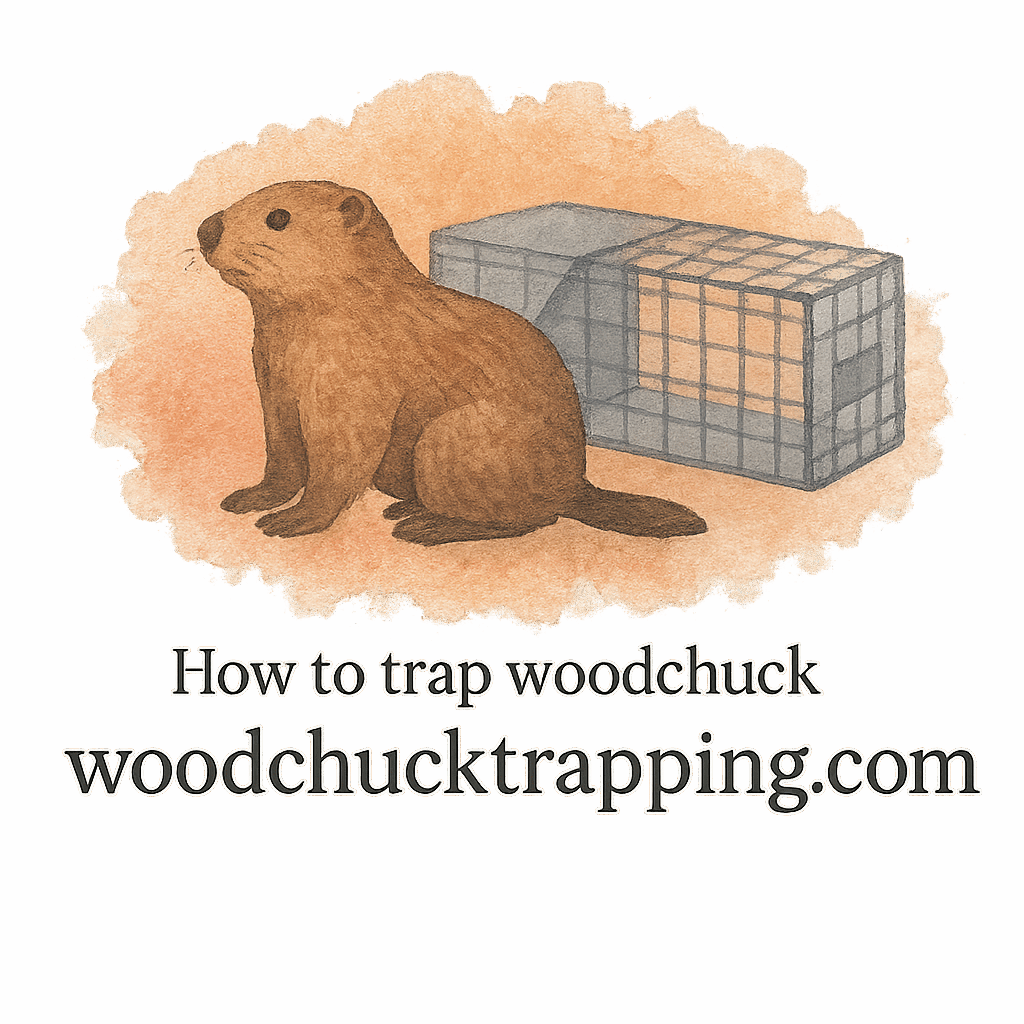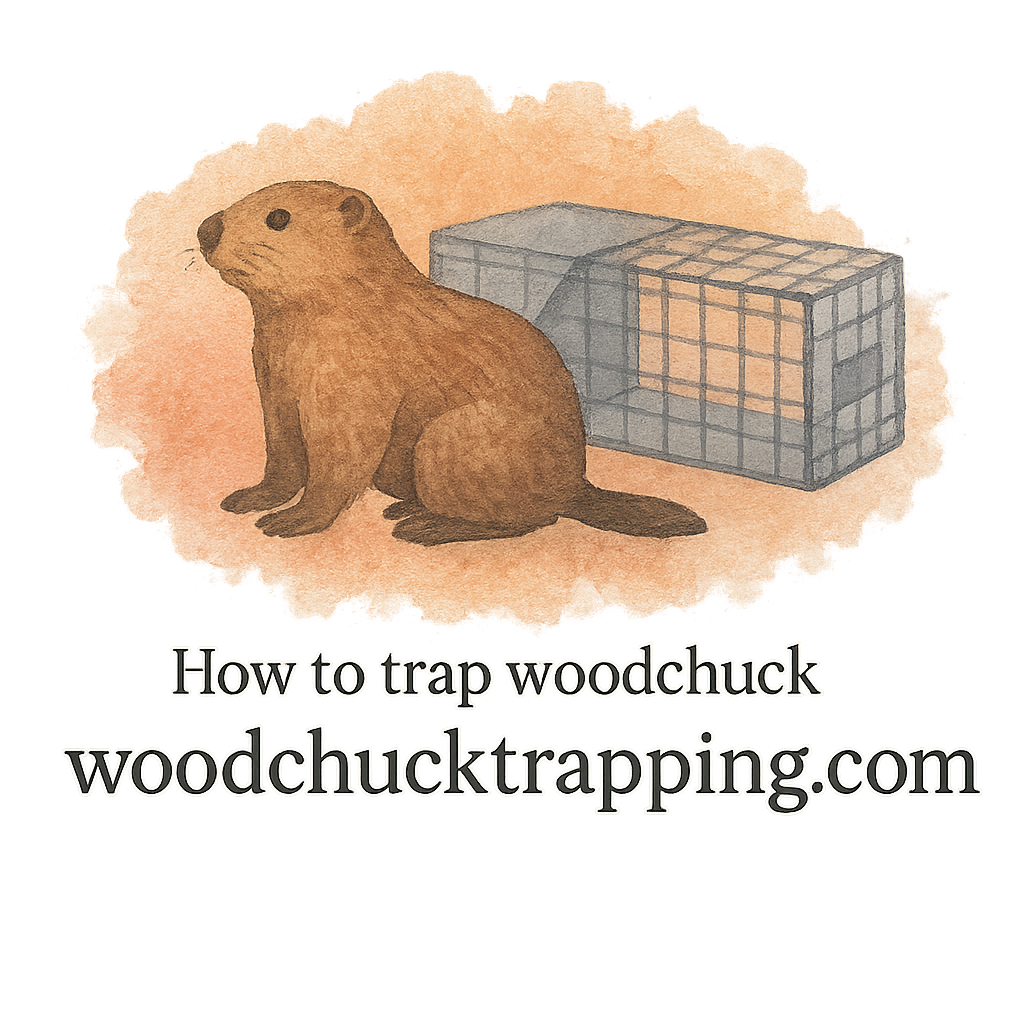Introduction
If you’ve ever walked into your garden only to find chewed-up vegetables, collapsed burrows, and damaged plants, chances are a woodchuck (also known as a groundhog) is the culprit. Many gardeners turn to woodchuck trapping techniques as a solution, but surprisingly, a lot of them make costly mistakes that waste time, money, and effort. In this guide, we’ll break down the 9 most common mistakes gardeners make with woodchuck trapping techniques and show you how to avoid them for good.
Understanding Woodchucks and Their Habits
Why Woodchucks Are a Gardener’s Nightmare
Woodchucks might look harmless, but they can devastate a garden in a matter of days. They love leafy greens, beans, peas, and even flowers. What’s worse, they burrow deep tunnels that can destabilize soil and damage roots.
Recognizing Signs of Infestation
Before you even think about setting a trap, you need to confirm the problem. Look for signs of infestation: freshly dug soil, gnawed plants, and multiple entry points near sheds or fences. If you see these, it’s time to act.
Mistake #1: Ignoring Woodchuck Burrows
The Importance of Locating Burrows
A lot of gardeners skip this step, but knowing where the burrows are is half the battle. Woodchucks are territorial, and their burrows are the center of their world.
How Burrows Affect Trapping Success
If your trap isn’t near an active burrow, you’re playing a guessing game. Positioning traps close to burrows increases your chances of success significantly.
Mistake #2: Choosing the Wrong Trap
Compact Traps vs. Large Traps
Not all traps are made equal. Using a trap that’s too small can harm the animal, while oversized traps may allow the woodchuck to escape. For small yards, compact traps often work best.
Equipment Reviews and Recommendations
Checking equipment reviews before buying ensures you’re making an informed choice. Many gardeners regret rushing into a purchase without research.
Mistake #3: Poor Baiting and Luring Choices
Using Ineffective Scent Baits
You’d be surprised how many people throw in an old carrot and hope for the best. The reality? Woodchucks are picky. Using the wrong scent bait won’t work.
Selecting the Right Lure for Success
Stick to proven baiting and luring methods. Fresh fruits like apples and cantaloupe often work better than vegetables. Don’t underestimate a well-placed lure.
Mistake #4: Mishandling Trapped Animals
Safety Risks of Improper Handling
Catching a woodchuck is only half the job. If you don’t use gloves or take proper precautions, you risk scratches, bites, and even disease.
Humane Approaches to Relocation
Instead of causing harm, use humane methods to release the animal. Always follow guidelines for safe handling and relocation.

Mistake #5: Setting Traps in the Wrong Location
Common Placement Errors
Some gardeners put traps in random spots. If the woodchuck never passes that area, you’ll be waiting forever.
Strategic Trap Placement Near Signs of Activity
Place traps along travel paths or near yard damage. Study their patterns—this is where smart trapping techniques make all the difference.
Mistake #6: Overlooking Laws and Safety Regulations
Legal Restrictions Every Gardener Should Know
Before trapping, check your state’s laws and safety rules. Some places require permits or restrict relocation.
Personal Safety When Trapping
Trapping isn’t risk-free. Protect yourself with safety gear and always consider your surroundings.
Mistake #7: Ignoring Prevention and Yard Protection
How Prevention Saves Time and Effort
Even after trapping, if you don’t prevent future invasions, the cycle repeats. Use fencing, barriers, and repellents for prevention and damage control.
Damage Control Tips for Small Yards
In a small yard, a single woodchuck can wreak havoc. Pay attention to minimal space solutions like compact fencing.
Mistake #8: Using Trapping Techniques Without Proper Tools
Essential Trap Gear for Gardeners
Trapping without the right trap gear is like fishing without a hook. At the very least, invest in quality tools.
Why Gloves and Trap Scent Matter
Woodchucks can detect human scent. Using trap scent and wearing gloves reduces suspicion, making your traps far more effective.
Mistake #9: Lack of Patience and Consistency
Why Trapping Requires Time
One of the biggest mistakes is expecting instant results. Woodchuck trapping is a waiting game.
Building a Long-Term Strategy
Combine smart techniques with consistency. Success comes from persistence, not luck.
Best Practices for Woodchuck Trapping Techniques
Combining Tools, Techniques, and Prevention
The best approach is a mix of traps, how-to-trap strategies, prevention, and proper equipment. Don’t rely on one method alone.
Avoiding Common Mistakes for Lasting Results
By steering clear of the nine mistakes above, you can outsmart even the trickiest woodchuck and protect your garden for good.
Conclusion
Woodchuck trapping isn’t rocket science, but it does require strategy, patience, and the right gear. By avoiding these nine mistakes, you’ll boost your success rate and keep your garden safe from damage. Remember: smart prevention today means fewer headaches tomorrow.
FAQs
1. What’s the best bait for woodchuck traps?
Fresh fruits like cantaloupe and apples are often the most effective.
2. How do I know if a burrow is active?
Look for freshly dug soil, tracks, or chewed plants near the opening.
3. Are woodchuck traps safe to use around pets?
Yes, but only if placed strategically and monitored carefully.
4. Can I relocate a trapped woodchuck anywhere?
No, always check laws and safety regulations in your area before relocation.
5. Do woodchucks return after relocation?
They usually don’t, but prevention steps are vital to keep new ones away.
6. How long does it usually take to catch a woodchuck?
It can take anywhere from a few days to a couple of weeks, depending on placement and bait.
7. Is there a humane way to trap woodchucks?
Yes, using humane trapping techniques ensures the animal isn’t harmed during the process.


